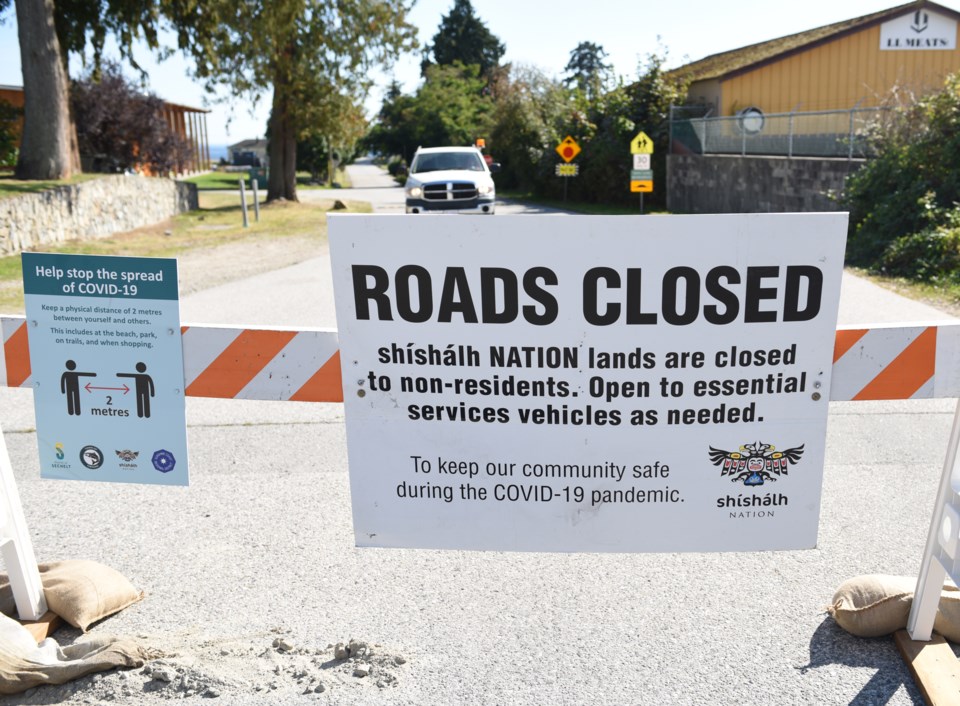An individual from shíshálh First Nation is self-isolating as a precaution after being in contact with someone who tested positive for COVID-19.
“The Nation member themselves does not have Covid-19 or any symptoms, and are taking precautions, as suggested by health officials, to self-isolate,” hiwus (Chief) Warren Paull said in a statement to Coast Reporter on Sept. 1.
Nation lands remain closed to the public as they have been since mid-April in response to the COVID-19 pandemic.
“We appreciate the fact people are abiding by our request not to walk on the seawall or drive on Nation lands, as we are doing everything we can to limit exposure of the virus, to our community members,” said Paull.
The chief’s comments came after a notice with a shíshálh Nation logo was circulated widely on social media stating “our community has been exposed to COVID-19” and sparking speculation about a possible outbreak.
Indigenous communities throughout B.C. have been especially careful about limiting exposure to the virus, according to acting chief medical officer Dr. Shannon McDonald in an interview with First Nations Health Authority media relations specialist John Moody last week, but she noted confirmed cases have been increasing.
On Aug. 28 Squamish Nation announced it had closed its offices due to an outbreak and as of Aug. 31, 19 Squamish Nation members had tested positive.
Up to the end of June there had been 86 cases and five deaths among B.C. First Nations both on and off reserve out of approximately 160,000 people.
“Communities have responded very effectively to the recommendations put forward [to] stay home, don’t go out in large groups, definitely stay home if you’re sick and take good care of yourself,” said McDonald.
“First Nations did that very well, from a family environment all the way to a community environment, where they locked down the community and really restricted the number of people who are coming and going.”
She said for young people especially, it’s important to “stay the course” and limit interactions with others in addition to following other protocols.
In a Sept. 1 daily update on COVID-19 from the province, Health Minister Adrian Dix said “there are 1,124 active cases of COVID-19 in the province [and] 2,761 people who are under active public health monitoring as a result of identified exposure to known cases.”
There had been 209 COVID-related deaths in B.C. as of Sept. 1.



